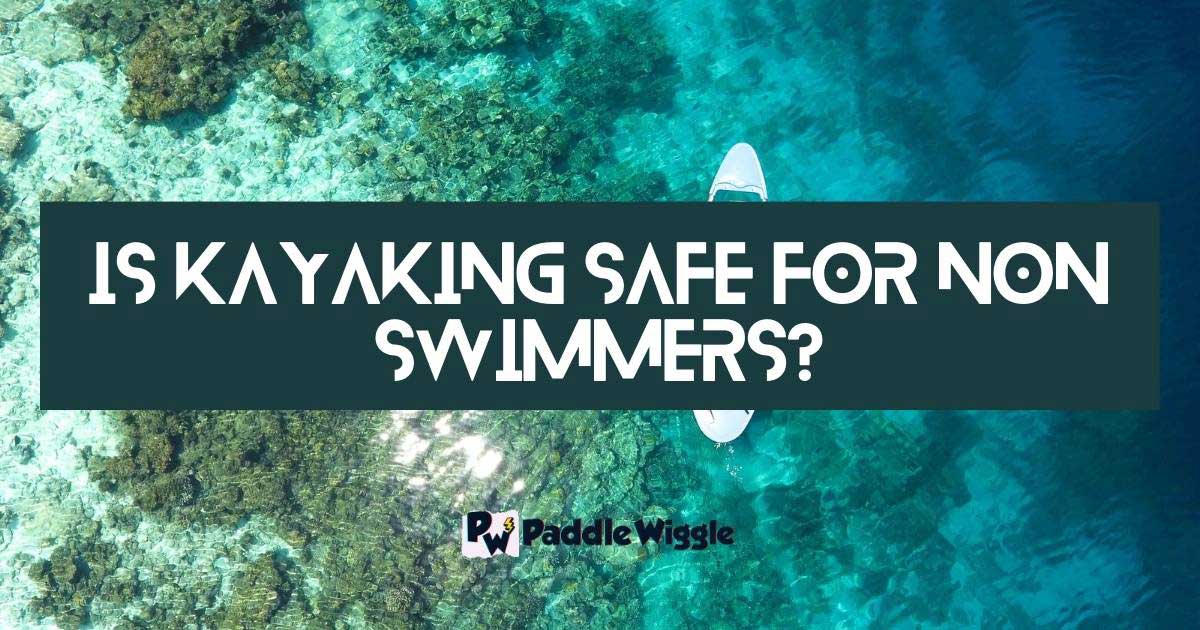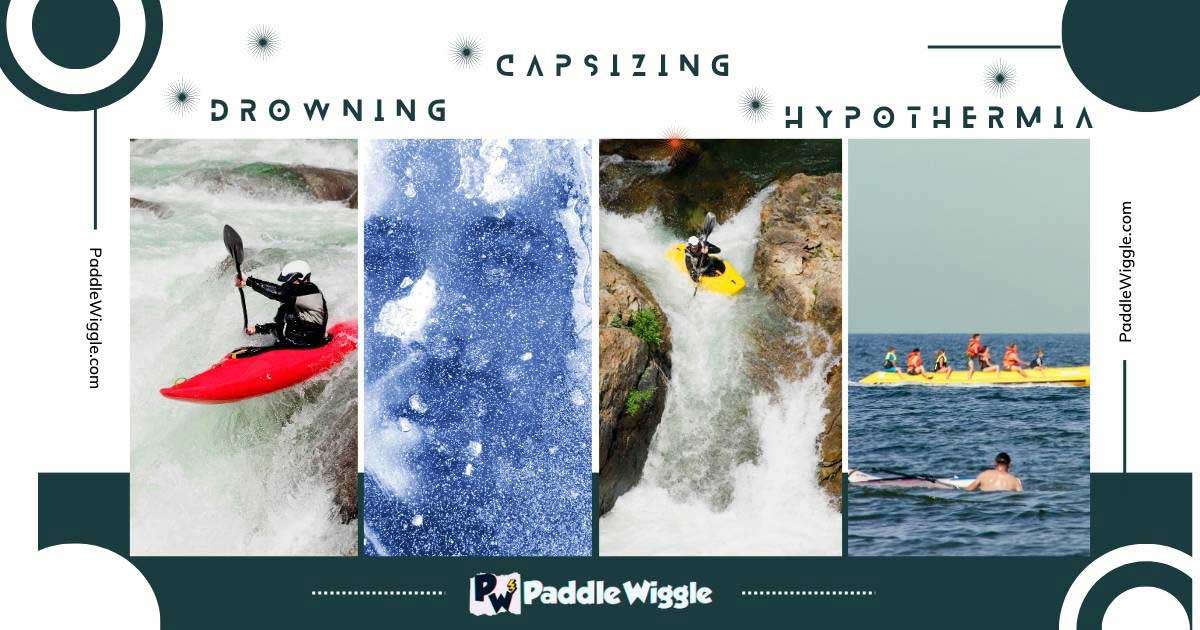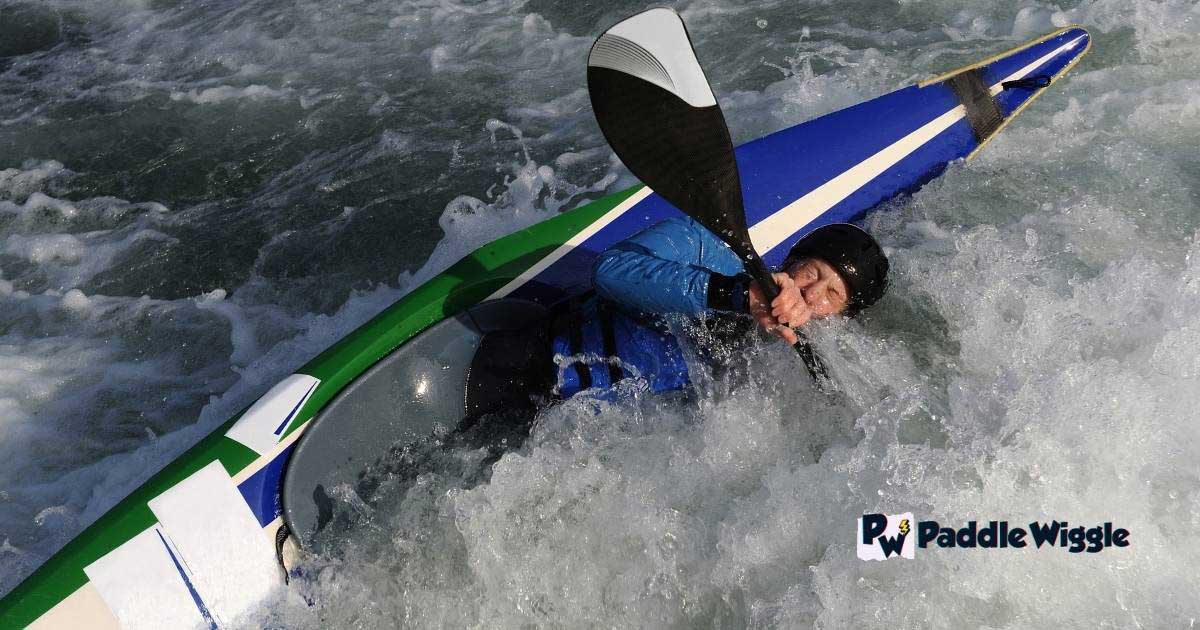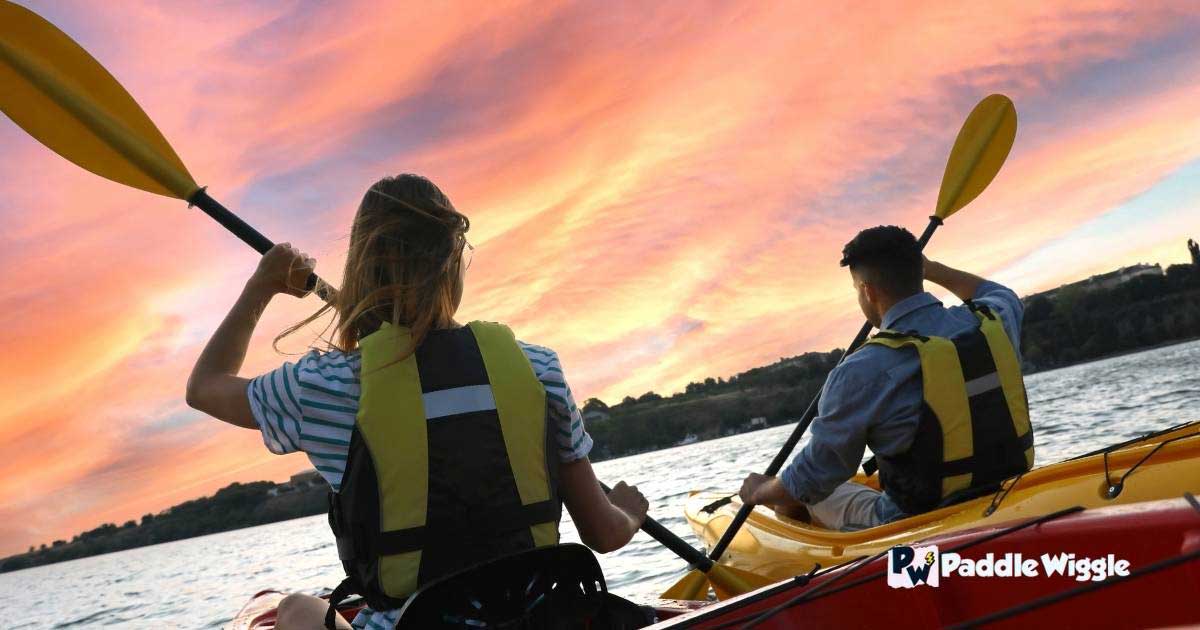Have you ever considered going Kayaking but felt hesitant because you don’t know how to swim? Kayaking can seem risky, especially if you are a non-swimmer. But don’t worry, we’re here to help you understand.
Let’s start with this; is kayaking safe for non swimmers? Yes, it is safe for non swimmers as long they follow the necessary precautions.
If you’re a non-swimmer, you might be wondering if it’s safe to go kayaking without knowing how to swim. But with the right safety measures, it can be a fun and safe activity for nonswimmers.
However, as an adventurous activity, there are potential risks associated with Kayaking. This typically includes sunburn, navigation challenges, sudden weather changes, and even flipping over. And sometimes they are hard to deal with, even for the experienced ones!


Contents
Should You Go Kayaking Without Knowing Swimming
Kayaking can be a thrilling adventure, whether you’re a seasoned kayaker or a first-time paddler. However, as you’re a non-swimmer, you might get nervous! Whether you should go? How far should you paddle? And lots more.
Firstly, I don’t recommend that non-swimmers go Kayaking, especially alone. If you fall out of your kayak or the kayak capsizes, being able to swim can help you reach safety quickly and avoid drowning.
However, that doesn’t mean that non-swimmers can’t go kayaking. With the right safety precautions and planning, Kayaking can be a safe and enjoyable activity for people of all skill levels.
So, should you go kayaking without knowing swimming depends on the following things;
- Did you take any lessons from an expert?
- Did you practice enough?
- Have you tried kayaking with friends or family?
Now, you have got the point. For just starting, you will need to take these necessary preparations. In this case, don’t hesitate to ask for help or advice from more experienced kayakers.
Potential Kayaking Hazards For Non Swimmers


As we mentioned before, Kayaking is not free from hazards. And there are some potential hazards and risks involved in kayaking for non-swimmers.
Here are a few of them:
Drowning
The biggest risk for non-swimmers when Kayaking is the possibility of drowning if they fall out of the kayak and are unable to swim to safety. This is why it’s essential to always wear a properly fitting life jacket and learn basic water safety skills before Kayaking.
Capsizing
Another potential hazard of Kayaking is capsizing, which happens when the kayak overturns in the water. Capsizing can happen for various reasons, such as hitting a rock or wave or making a sudden turn. Non-swimmers may find it more challenging to right the kayak and climb back in after a capsize.
Hypothermia
Hypothermia is a condition that can occur when the body loses heat faster than it can produce it. This can happen when kayaking in cold water, especially if you’re not wearing proper clothing or a wetsuit. Hypothermia can be life-threatening and can affect anyone, regardless of swimming ability.
Injuries
Kayaking can also pose a risk of injuries, such as cuts, bruises, or sprains. These can happen if you hit a rock or other object in the water or if you accidentally hit yourself with the paddle. Non-swimmers may be more vulnerable to injuries if they’re not familiar with how to maneuver the kayak.
Guide To Kayaking without Knowing How to Swim
Kayaking is an exciting adventure. And regardless of their skills, ages, and swimming ability, anyone can enjoy the beauty of exploring the waterways. However, to minimize the risks of Kayaking, it’s important to take proper safety precautions when you plan for the trip.
So, if you’re interested in Kayaking but don’t know how to swim, here are some tips to help you get started:
Manage the risk of capsizing and drowning


Knowing how to enter and exit the kayak properly is crucial. In the event of capsizing, stay calm and hold onto the kayak. Try to reach the shore while holding onto the kayak.
Wear a life jacket
A properly fitting life jacket is essential for Kayaking, especially if you don’t know how to swim. Make sure the life jacket is Coast Guard-approved and fits snugly around your chest. Don’t forget to fasten all the buckles and straps properly.
Stay close to the shore
When you’re first starting out, it’s a good idea to stay close to the shore. This will allow you to get used to the kayak and the water without going too far from safety. You can gradually increase the distance of your paddles as you gain more experience.
Paddle with a partner


It’s always a good idea to paddle with a partner, especially if you’re not a confident swimmer. This way, you can look out for each other and help each other in case of an emergency.
Learn basic water safety skills
Even if you don’t know how to swim, it’s important to learn basic water safety skills, such as exiting a capsized kayak and signaling for help. Take a class or talk to a certified kayaking instructor to learn these skills.
Choose calm waters
When you’re starting out, it’s best to choose calm waters with no or minimal current. Avoid Kayaking in strong winds, waves, or currents until you’re more experienced.
Practice with a paddle float
A paddle float is a device that can help you get back into your kayak if you capsize. Practice using a paddle float in shallow water to gain confidence in your ability to get back in the kayak.
Know what to do in case of an emergency
Have a plan in case of an emergency. Know how to signal for help and how to perform basic first aid.
Places To Avoid For Non-Swimming Kayakers


Listen up! If you’re planning on Kayaking but don’t know how to swim, you must be extra careful about where you go. Don’t ever think about heading out to open water like oceans or large lakes with strong currents and rapids.
You need to stick to the calm and peaceful waters of small lakes or ponds, slow-moving rivers, or canals that won’t toss you around like a rag doll. Pick a spot with a designated swimming area nearby and stick to the kayaking area.
And don’t forget to check the weather forecast before you go! No one wants to get caught in a storm while out on the water. Safety should always be your top priority when kayaking, especially if you’re not a swimmer. Stay safe out there!
Alternative Water Activities for Non-Swimmers
If you’re a non-swimmer and are uncomfortable with Kayaking, don’t worry! There are still plenty of fun and safe water activities you can enjoy. Here are a few suggestions:
- Stand-up paddleboarding: Stand-up paddleboarding, or SUP, is a great alternative to Kayaking. You stand on a board and use a long paddle to move through the water. It’s a low-impact, full-body workout that’s great for balance and core strength.
- Fishing: Fishing is a relaxing and enjoyable water activity that doesn’t require swimming. You can fish from the shore or from a boat, and it’s a great way to spend time with family or friends.
- Boating: If you don’t want to get in the water, you can still enjoy being on it! Renting a boat or taking a boat tour is a great way to explore the water and enjoy the scenery.
- Water aerobics: Water aerobics is a low-impact exercise in shallow water. It’s great for non-swimmers who want to get a workout in while staying safe.
Learn More
Do You Need To Know How To Swim To Kayak?
While it is recommended to have basic swimming skills, it is not necessary to be a strong swimmer to go Kayaking. Wearing a life jacket and taking necessary safety precautions can help ensure a safe kayaking experience for non-swimmers.
What Safety Precautions Should Non-Swimmers Take Before Going Kayaking?
Non-swimmers should wear a life jacket, stay close to shore, and avoid strong currents or rapids. It is also recommended to receive proper training and guidance before going kayaking.
Can Non-Swimmers Take Kayaking Classes Or Lessons?
Yes, non-swimmers can take kayaking classes or lessons specifically designed for beginners and non-swimmers. These classes can provide valuable training and guidance on kayaking safety and techniques.
Final Words
Kayaking can be a great activity for non-swimmers, but it’s important to prioritize safety and take the necessary precautions to prevent accidents. Always wear a properly fitting life jacket, stay close to shore, avoid strong currents, and learn proper paddling techniques. It’s also a good idea to go with an experienced kayaker or take a lesson from a certified instructor.
And if you’re uncomfortable with kayaking, plenty of alternative water activities are just as fun and safe. Remember, the key is to enjoy the water while staying safe!



